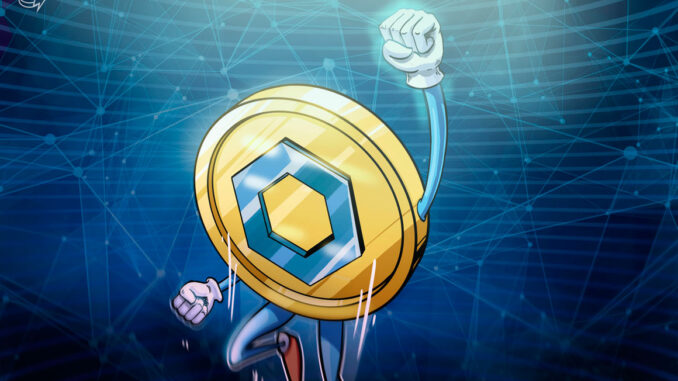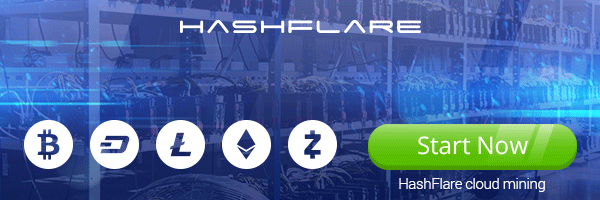
[ad_1]
Chainlink (LINK) oracles have made their way to xDai, an Ethereum sidechain that has seen growing adoption among DApp developers who cannot afford to stay on the Ethereum mainnet.
As announced by Chainlink on Thursday, its price feeds are live on the xDai mainnet, offering price data for an initial set of trading pairs including LINK/USD, AAVE/USD, DOT/USD and SUSHI/USD. More pairs can be quickly added if there is demand, the company said.
The integration was completed by Protofire, a development workshop and xDai validator. The team received a Chainlink Community Grant to port native Chainlink oracles on xDai, including a token bridge adapter that enables native LINK payments for the oracle’s functionality.
The integration of Chainlink price feeds is the latest in a series of positive adoption news for the xDai project. The chain was already hosting major Ethereum-based DApps like Perpetual Protocol, a derivatives platform, and Omen, a prediction market developed by Gnosis. The inclusion of native Chainlink oracles removes a major barrier for projects relying on them, potentially opening up xDai for more DApps who wish to escape from the congested Ethereum mainnet.
Decentralization is good, but it won’t pay for gas
xDai is a relatively centralized sidechain secured by an independent set of validators. Sidechains are a type of chain where a standalone blockchain uses another’s token as a native currency for paying transaction fees — in xDai’s case, that token is MakerDAO’s Dai. The architecture binds the economies of the two environments, but the sidechain is otherwise a completely independent entity with its own security rules.
In the Ethereum community, xDai is commonly known as a centralized layer two solution. It was launched by PoA Network, a project whose name directly hints to centralization — Proof of Authority is the somewhat euphemistic name of a consensus model where the validators are chosen by the project’s insiders, instead of a community.
The xDai chain has since its launch transitioned to a Proof-of-Stake model very similar to that used by EOS or Binance Smart Chain. The total number of validators can never exceed 19, compared to the tens of thousands of validators in Ethereum’s Beacon Chain. The benefit this architecture provides is faster scalability, with xDai offering an advertised 70 transactions per second for simple token transfers.
In a conversation with Cointelegraph, Friederike Ernst, chief operating officer at Gnosis, agreed that xDai is somewhat centralized:
“It is not as decentralized as mainnet, this goes without saying. Obviously these are for very different use cases: you don’t want to do things on xDai where you need the economic consensus guarantees of layer one. But for many things, you don’t actually need them.”
The allure of xDai comes in part from its almost plug-and-play compatibility with Ethereum. Its OmniBridge allows moving any token to xDai and back, while its blockchain architecture is almost identical to Ethereum. This makes porting DApps or infrastructure elements like oracles very easy.
The centralization concerns seem to be not enough to stop adoption. Chainlink sees itself following developer demand, with Johann Eid, head of integrations at Chainlink Labs, telling Cointelegraph that “smart contract developers should have the option to work with whichever chain is the best fit for their use case.”
For Omen, the decision to set up shop on xDai was a matter of immediate necessity, Ernst explained:
“For most things, the gas costs outweigh the downsides of being on a PoA chain. And the fact of the matter is, while people are betting on a lot of layer two solutions, very few of them are in production.
Array
The growing adoption of xDai or Binance Smart Chain is seemingly at odds with the crypto community’s preference of decentralization. Ethereum fans often believe that the prevalence of DeFi on the blockchain is the result of its more decentralized architecture and community spirit. Indeed, the rise in usage of blockchains like Tron or BSC occurred after it became clear Ethereum could not cope with its load.
At the same time, decentralization appears to be not enough by itself. For example, the most Ethereum-like blockchain in existence is Ethereum Classic, which was formed by a community who believed that Ethereum was not decentralized enough. It has failed to attract almost any interest from DApp developers.
More centralized solutions have a major benefit going for them — they work, right now. Rollup-based layer two solutions are still in development, with Optimistic Rollups being closest to release. Ernst was not particularly enthusiastic about its one week withdrawal waiting period, though. “I’m a huge fan of zkRollups. There you don’t have the withdrawal limitations, but the technology is not developed enough.”
While some developers continue waiting for rollup-based solutions, platforms like xDai can advance unimpeded. “Ultimately, it’s a tradeoff between the higher security guarantees offered by Ethereum and the usability, innovation, speed and cost savings right now on L2 sidechains,” an xDai spokesperson told Cointelegraph. As long as gas fees on Ethereum remain high, DApps may bforced to choose practicality over ideology.
[ad_2]
Source link




 Bitcoin
Bitcoin  Ethereum
Ethereum  Tether
Tether  XRP
XRP  Solana
Solana  USDC
USDC  Dogecoin
Dogecoin  TRON
TRON  Cardano
Cardano
Be the first to comment